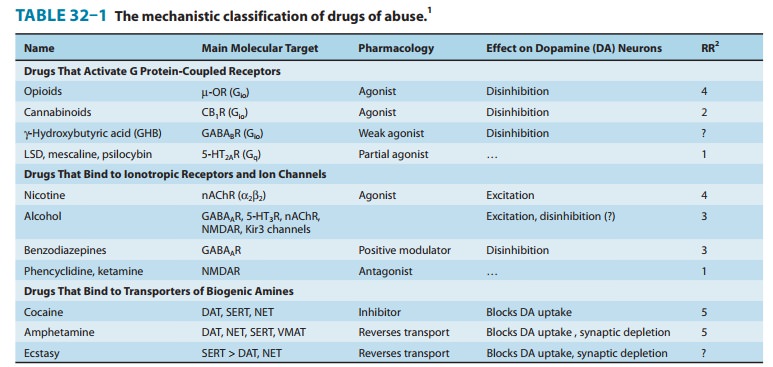Chapter: Basic & Clinical Pharmacology : Drugs of Abuse
Nonaddictive Drugs of Abuse
NONADDICTIVE DRUGS OF ABUSE
Some drugs of abuse do
not lead to addiction. This is the case for substances that alter perception
without causing sensations of reward and euphoria, such as the hallucinogens
and the dissocia-tive anesthetics (Table 32–1). Unlike addictive drugs, which
primarily target the mesolimbic dopamine system, these agents primarily target
cortical and thalamic circuits. Lysergic acid diethylamide (LSD), for example,
activates the serotonin 5-HT2A receptor in the prefrontal cortex, enhancing glutamatergic
trans-mission onto pyramidal neurons. These excitatory afferents mainly come
from the thalamus and carry sensory information of varied modalities, which may
constitute a link to enhanced perception. Phencyclidine (PCP) and ketamine
produce a feel-ing of separation of mind and body (which is why they are called
dissociative anesthetics) and, at higher doses, stupor and coma. The principal
mechanism of action is a use-dependent inhibi-tion of glutamate receptors of
the N-methyl-D-aspartate (NMDA) type.

The classification of
NMDA antagonists as nonaddictive drugs was based on early assessments, which,
in the case of PCP, have recently been questioned. In fact, animal research
shows that PCP can increase mesolimbic dopamine concentrations and has some
reinforcing properties in rodents. Concurrent effects on both thal-amocortical
and mesolimbic systems also exist for other addictive drugs. Psychosis-like
symptoms can be observed with cannabi-noids, amphetamines, and cocaine, which
may reflect their effects on thalamocortical structures. For example,
cannabinoids, in addition to their documented effects on the mesolimbic
dopamine system, also enhance excitation in cortical circuits through
presyn-aptic inhibition of GABA release.
Hallucinogens and NMDA
antagonists, even if they do not produce dependence or addiction, can still
have long-term effects. Flashbacks of altered perception can occur years after
LSD use. Moreover, chronic use of PCP may lead to an irreversible
schizophrenia-like psychosis.
Related Topics